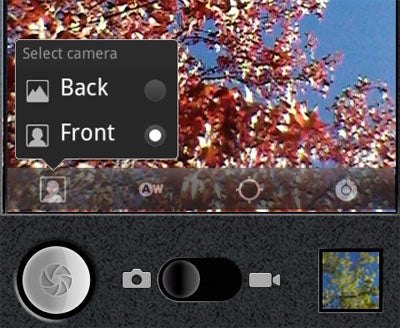Article copyright 2010 JR Raphael. All rights reserved.

No need to pinch yourself, Android fans: Gingerbread is actually here.
Google took the wraps off its Android Gingerbread upgrade early Monday morning. The freshly baked release -- officially known as Android 2.3 -- will start making its way into users' hands within a matter of days.
So what's new in Android Gingerbread, and what'll it mean for you? Here are answers to all of your most pressing questions.
See also: Android 2.3 upgrade list: Is your phone getting Gingerbread?
[UPDATE: Looking for info on Ice Cream Sandwich? Check out my full Ice Cream Sandwich FAQ and Android 4.0 upgrade list for everything there is to know about that release.]
What are the biggest new features in Android Gingerbread?
Google's Android Gingerbread introduces a slew of improvements to the operating system, both on the surface and under the hood. The most significant core changes -- in terms of what will directly affect users -- revolve around four main areas:
-
Faster speed. Google promises Gingerbread is its "fastest version of Android yet," thanks to its improved responsiveness and power management.
-
Better Android battery life. According to Google, Gingerbread "takes a more active role" in policing apps that unnecessarily drain your phone's battery. With Gingerbread, the system will automatically kill an application if it's using too much of your device's power while running in the background.
-
Better application management. In addition to the automated app policing system, Gingerbread introduces an expanded app settings area that lets you easily see detailed information about each app's battery usage. The updated "Manage Applications" tool, meanwhile, is basically a built-in task manager: It lets you review all of your active applications, see what types of resources each one is utilizing, and manually force-stop any program if something is wrong.


-
An updated user interface. Android's UI gets a refresh with Gingerbread. And that brings us to our next question...
What'll look different in Android Gingerbread?
Android Gingerbread isn't the massive redesign we've been hearing about -- that may still be ahead with Google's next major release, Honeycomb -- but there are a number of interface changes you'll notice right away. Among them:
-
An updated color scheme. Gingerbread introduces a "simplified visual theme" that includes a darker notification bar and black-based menus.


-
A new keyboard. Android Gingerbread features a redesigned on-screen keyboard that's said to be faster and more intuitive. In addition to its updated form, the keyboard now supports multitouch input and a "smart" autocorrect function.

-
Improved cut-and-paste. Android Gingerbread allows you to long-press on any Web page or text input field to select words and copy them to the system clipboard.

-
Easier file management. A new integrated Downloads app lets you access and manage every file you download, whether you get it via the Internet, e-mail, or through any other program.

-
Better camera management. An updated Android camera app provides access to multiple cameras for devices with front- and rear-facing lenses.

What new technologies will Gingerbread support?
My, you're just full of good questions today. Android Gingerbread adds support for several new kinds of technology that future Android phones -- including the newly announced Google Nexus S -- will offer. Among them:
-
Near Field Communication (NFC). As first revealed by Google CEO Eric Schmidt last month, Gingerbread will offer full support for NFC. If your phone has the necessary chip (the Nexus S does), you'll be able to tap your device against special NFC sensors to exchange information and eventually even make credit card payments.
-
Internet calling. Gingerbread enables support for SIP-based Internet phone calls. Like with the NFC function, though, devices have to support it -- and in what may end up being a barrier for many of us, the carriers have to sign off on it, too.
-
Lots of sensors. Android Gingerbread can read a whole bunch of new kinds of sensors, including gyroscopes, gravity sensors, and barometers -- yes, barometers. Measuring atmospheric pressure, evidently, is something future Android apps may do.
-
Extra-large screen sizes. Gingerbread's programming tools offer support for devices with larger-than-normal displays -- in other words, tablets. While the bulk of Android's tablet optimization is expected to arrive with Honeycomb, this is certainly a step in that direction.
What about gaming -- isn't Gingerbread supposed to get better there?
Indeed, it is. As you'll see in Google's official Android 2.3 introduction video, Gingerbread has a host of new tools designed to help developers bring high-end games to the Android platform. You can read the technical specifics, if you're interested, at Google's Android Developers site.
Anything new with the Android Market?
Google's been hinting at upgrades to its Android Market for some time now. We've seen a couple of new features arrive in recent weeks -- developer-provided ratings, for example, and an added "Recent Changes" section within app descriptions -- but so far, no major Market upgrades have been mentioned in connection with Gingerbread.
So what about the PayPal purchasing support, Android Market Web store, and Google Music services we've been expecting? No word yet on any of 'em...stay tuned.
OK -- so when will my phone get the Gingerbread upgrade?

That, my friends, is the million-dollar question. For the most current info available, click over to our regularly updated Android 2.3 upgrade list.
If you're still waiting for Froyo, be sure to check out our Android 2.2 upgrade list, too. It's always kept up-to-date with the latest Froyo info available for all devices.
JR Raphael writes about smartphones and other tasty technology. You can find him on Facebook, on Twitter, or at eSarcasm, his geek-humor getaway.
Article copyright 2010 JR Raphael. All rights reserved.





